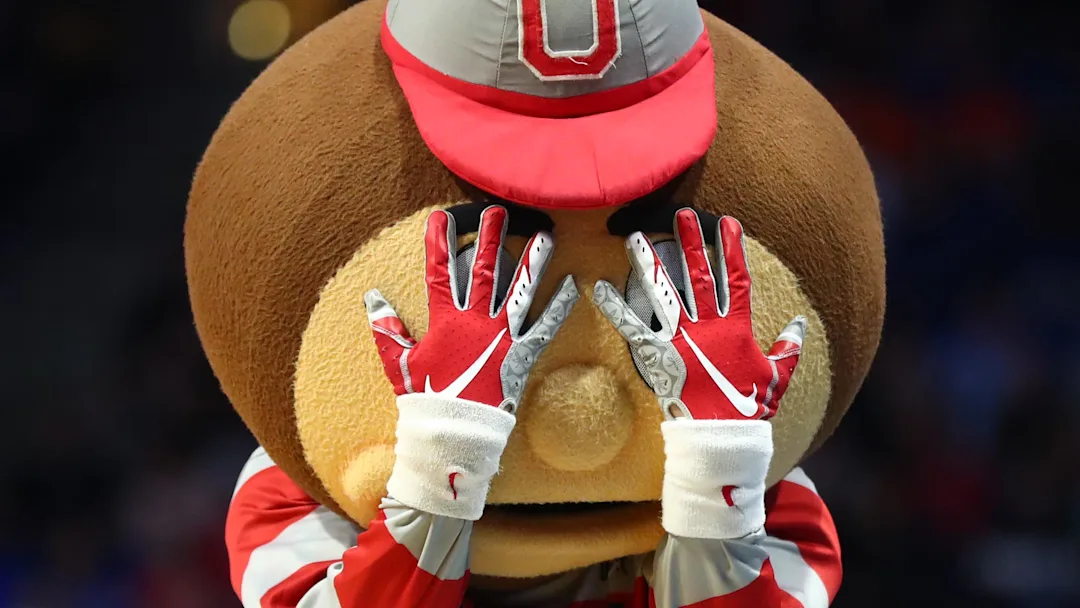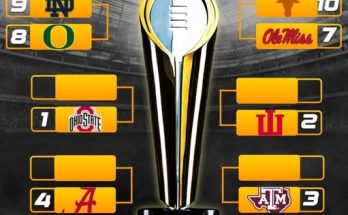In the high-stakes world of college football recruiting, every commitment is a prized victory—especially for a program of Ohio State’s caliber. Known for its elite talent acquisition and championship pedigree, Ohio State has long been a magnet for some of the nation’s most coveted high school athletes. So when a top recruit flips away or withdraws a commitment, it sends shockwaves through the program, fans, and the recruiting landscape alike. Such is the case for the Ohio State Buckeyes, who recently suffered a significant setback when one of their most highly regarded commits unexpectedly reopened his recruitment, ultimately pledging elsewhere. This loss not only alters the Buckeyes’ recruiting class but also raises important questions about the program’s future roster construction and competitive outlook.
To understand the magnitude of this blow, it’s essential to consider the recruit in question. He was not just any prospect; he was one of the nation’s elite, a five-star athlete with the physical tools, skills, and intangibles to make an immediate impact on the field. His commitment to Ohio State was seen as a coup—both by the coaching staff and the fan base—signaling that the Buckeyes were still at the forefront of recruiting battles against perennial rivals such as Michigan, Penn State, and other blueblood programs.
The recruit’s decommitment followed a period of intense speculation and recruitment drama. Reports indicated that he had been in close contact with multiple programs, and there were whispers about a potential flip even before the formal announcement. When it finally came, the decision stunned many, as Ohio State had invested heavily in courting this player, including multiple official visits, personalized development plans, and promises of a pivotal role in the team’s future. The reasons behind the reversal are complex and multifaceted, but they likely reflect a combination of factors—coaching dynamics, scheme fit, NIL (Name, Image, and Likeness) opportunities, and personal preferences.
The coaching carousel that has swept through college football over the last few years can never be overlooked in situations like this. Even programs as stable and prestigious as Ohio State are not immune to the ripple effects of coaching changes, staff turnover, or shifts in offensive and defensive philosophy. For many top recruits, the relationship with position coaches and the promise of specific developmental pathways weigh heavily in their decisions. If any of those assurances seem uncertain or if a coach they trusted leaves the program, it can sow doubt and lead to reconsideration.
Beyond the internal dynamics of the program, the NIL landscape has reshaped recruiting nationwide. Athletes now consider potential NIL deals, brand-building opportunities, and local market visibility as key factors in their decision-making process. While Ohio State remains a major market with a passionate fan base, competing programs have aggressively marketed their NIL capabilities, sometimes tipping the balance in their favor. For a recruit weighing the financial and branding aspects of his collegiate choice, this factor can prove decisive.
Losing a top-tier commitment inevitably leaves gaps in the recruiting class that must be addressed quickly and decisively. Ohio State’s recruiting staff will now have to regroup and pivot their strategy to fill the void. This could mean accelerating other pursuits in the transfer portal or ramping up efforts with remaining uncommitted prospects. The competition for elite talent is fierce, and any sign of vulnerability or setback can be exploited by rival programs, so the Buckeyes will need to be proactive.
From a roster construction standpoint, this lost recruit was expected to contribute in critical positions—likely in the offensive or defensive skill groups—where depth and talent are paramount. His physical attributes and versatility would have bolstered Ohio State’s depth chart and provided flexibility to the coaching staff in game planning. The absence of such a player means the Buckeyes will have to rely more heavily on other recruits, existing players stepping up, or future recruiting classes to maintain the level of competitiveness expected at Columbus.
For fans and boosters, the loss is particularly bitter given the high hopes pinned on this recruit. Recruiting commitments often symbolize the future, a tangible sign that the program is building toward sustained success. When a top recruit departs, it can feel like a setback in the quest for championships, and it may raise concerns about whether Ohio State can continue to attract the nation’s best. However, while disappointing, such occurrences are part and parcel of the modern recruiting landscape, where commitments are fluid, and players have unprecedented freedom to explore their options.
It is worth noting that Ohio State’s recruiting history is filled with examples of resilience and adaptability. The Buckeyes have weathered decommitments and recruitment battles before and still managed to assemble formidable rosters that have competed at the highest levels. Head coach Ryan Day and his staff have proven capable of making swift adjustments and identifying diamonds in the rough who blossom into stars. So while this loss stings, it is not necessarily a harbinger of long-term trouble.
The recruiting process itself has become increasingly complex and competitive in the era of social media, NIL, and transfer portals. Players have access to more information and opportunities than ever before, making their decisions more nuanced. Coaches must not only sell their program’s tradition and winning culture but also demonstrate stability, player development, and financial opportunities off the field. Ohio State, with its storied history and resources, still checks many of these boxes, but the loss of a top commit highlights the razor-thin margins that define success and failure in recruiting.
Analyzing the potential impact on Ohio State’s on-field performance, this loss could create short-term challenges but also opens opportunities for other players to rise. Depth at key positions is critical in a grueling Big Ten schedule that often features physical matchups and injury risks. Losing a recruit who could have contributed early means the Buckeyes might have to rely more on less experienced players or adjust their schemes to maximize available talent. The coaching staff’s ability to develop players and maximize their potential will be tested.
This incident may also serve as a wake-up call internally for Ohio State’s recruiting strategies and player engagement efforts. In the coming months, it is likely the coaching staff will double down on relationship-building, transparency, and leveraging NIL and development opportunities to keep future commits engaged and satisfied. It may also prompt a review of how the program presents its vision to top-tier recruits, ensuring it aligns with the evolving expectations of today’s athletes.
From a broader perspective, this loss reflects the increasing parity and dynamism in college football recruiting. The traditional powers like Ohio State can no longer take top commitments for granted. Other programs are closing the gap through innovative recruiting, NIL marketing, and strong player development narratives. This shift enhances the competitive balance and makes college football more unpredictable and exciting but also more challenging for programs trying to maintain elite status.
The timing of the decommitment is also critical. With the early signing period and National Signing Day looming, Ohio State’s coaching staff must act quickly to salvage the recruiting class. They will likely accelerate talks with high-potential prospects who may have been on the fence or overlooked. Additionally, the transfer portal may become an essential tool to patch any immediate roster needs, especially for experienced players who can contribute right away.
Media and fan reaction have been mixed but mostly sympathetic. Many understand that recruiting is a fluid process and that players must ultimately make decisions that are best for their future. Some fans expressed frustration or disappointment, while others emphasized trust in the coaching staff’s ability to rebound. This reaction underscores the high expectations Ohio State faces and the pressure on its coaching staff to deliver results both on and off the field.
Looking forward, Ohio State remains positioned as one of college football’s elite programs. The Buckeyes’ facilities, fan base, and winning culture continue to be magnets for top talent. Losing a top recruit is a setback, but it also presents an opportunity for other players to step into the spotlight and for the coaching staff to demonstrate their recruiting prowess under pressure. The program’s response in the coming weeks will be closely watched and could define the trajectory of the class and, by extension, the team’s future success.



